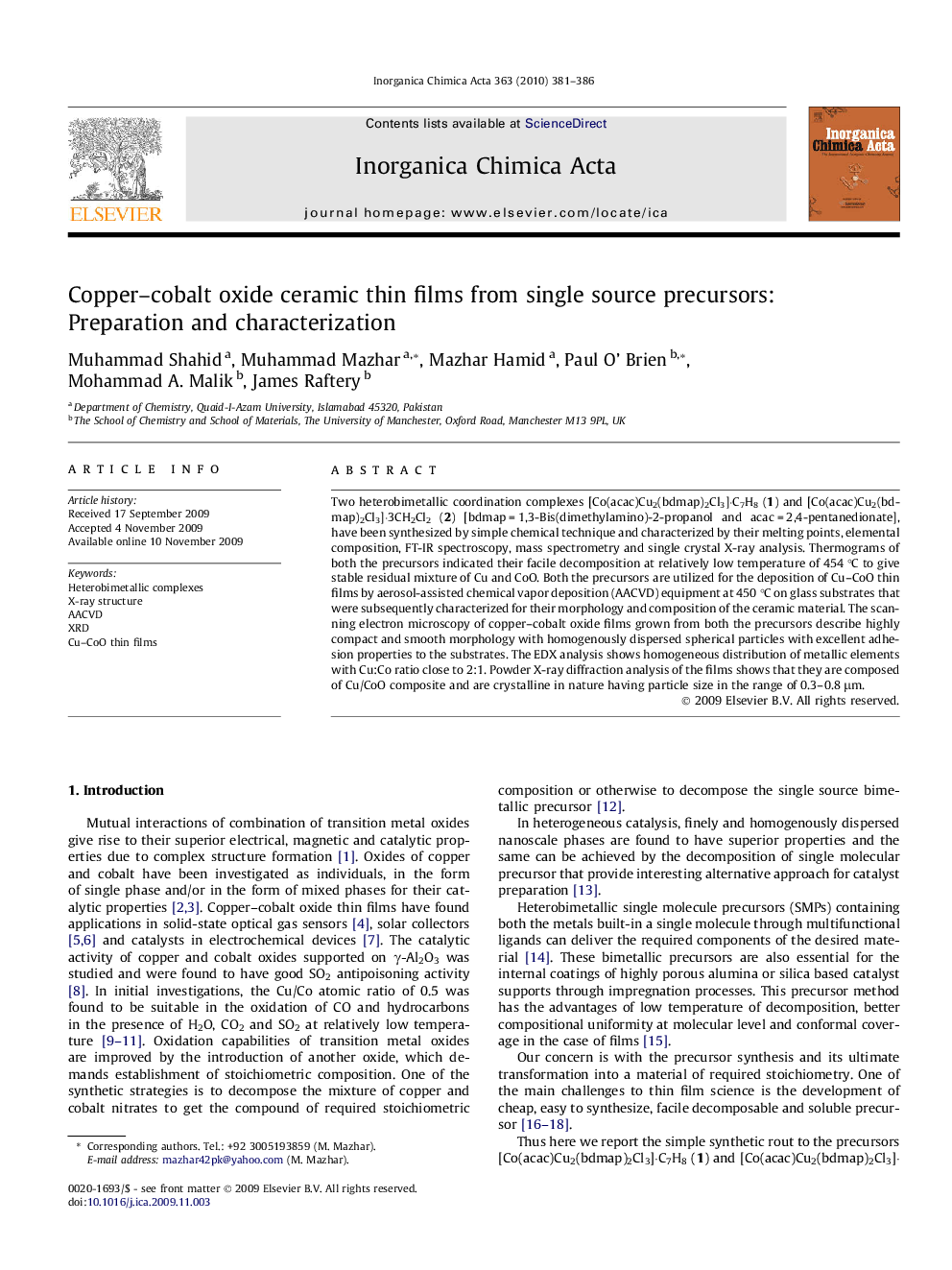| Article ID | Journal | Published Year | Pages | File Type |
|---|---|---|---|---|
| 1311271 | Inorganica Chimica Acta | 2010 | 6 Pages |
Two heterobimetallic coordination complexes [Co(acac)Cu2(bdmap)2Cl3]·C7H8 (1) and [Co(acac)Cu2(bdmap)2Cl3]·3CH2Cl2 (2) [bdmap = 1,3-Bis(dimethylamino)-2-propanol and acac = 2,4-pentanedionate], have been synthesized by simple chemical technique and characterized by their melting points, elemental composition, FT-IR spectroscopy, mass spectrometry and single crystal X-ray analysis. Thermograms of both the precursors indicated their facile decomposition at relatively low temperature of 454 °C to give stable residual mixture of Cu and CoO. Both the precursors are utilized for the deposition of Cu–CoO thin films by aerosol-assisted chemical vapor deposition (AACVD) equipment at 450 °C on glass substrates that were subsequently characterized for their morphology and composition of the ceramic material. The scanning electron microscopy of copper–cobalt oxide films grown from both the precursors describe highly compact and smooth morphology with homogenously dispersed spherical particles with excellent adhesion properties to the substrates. The EDX analysis shows homogeneous distribution of metallic elements with Cu:Co ratio close to 2:1. Powder X-ray diffraction analysis of the films shows that they are composed of Cu/CoO composite and are crystalline in nature having particle size in the range of 0.3–0.8 μm.
Graphical abstractTwo heterobimetallic Co–Cu precursors synthesized and characterized by their melting points, elemental analysis, FT-IR spectroscopy, mass spectrometry and single crystal X-ray analysis are decomposed directly under AACVD conditions to give Cu–CoO ceramic thin films.Figure optionsDownload full-size imageDownload as PowerPoint slide
